This is a page where I will work on news, new ears for the adoptables, etc. I'll likely also post rules and events here, so keep an eye on this page.
Shovel-claw burrowers (scbs) are large creatures resembling ant eaters. Sometimes you will see them rest on their knuckles due to their claws being too long to use their paws, but while walking and foraging they prefer to walk on their hind feet so their claws are easier to use; when a scb stands up its hind feet are not quite the same as an ant eater, they are more like that of a standing lizard, a bird or a dinosaur. This allows them to bend forward and claw the ground. When a scb feels threatened he/she will stand straight up ready for attack. They know they are much larger than you and can be quite dangerous. Most scbs range from the size of an adult pig to the size of a small horse. A shovelclaw is an omnivore. They will eat practically anything with their long tongue strawed tongue, but usually they prefer nectar and insects. They use their long claws for defense and for searching food. Also sometimes for a good scratch for a friend's itch. Most shovel-claw burrowers are migratory. They eat a lot of food so they stay wherever food is plentiful. But if food supplies run well they will herd off to find more. For now, larger scbs are the only ones known to exist. But some say they've seen creatures resembling them the size of a mouse. Who knows, maybe we'll discover them someday.
Teenage scbs have grown to full size and will not likely grow anymore. [I can't really do teen lines. ]
Male scbs will often stand on their hind legs to 'challenge' one another over a mate, and can sometimes grow extravagant colored tufts on the back of their mane that match their tongues, eyes, and claws to show dominance and attract a mate when they're an adult.
Baby scbs are carried by their mother and cling onto their mother's back for the first year of their life.
After a year the young burrowers will start to wander away from their parents, but they won't start trying to forage for their own food until they are 5 years old. After five years old, young scbs will start socializing with other young scbs. they are very social animals and bond easily, if a young scb happens to know a human from a young age, they can have similar bonds to the ones they have with their own kind.
Sounds they make are a various amounts of grunts, squeaks, whistles, and chattering noises. Some say that a couple of their noises resemble barking.
Scbs diets consist of insects, fruit, and nectar. They can grow used to sweets and may also eat small pieces of meat.
Rarities- Very common scbs have 2 colors. Example- A light green scb with yellow eyes and dark green design. They usually have the tongue, eyes and claws, and occasionally a tuft the same color as eachother while their body is a lighter and darker (or reverse) of one color. Different tones of the same color can be used as well.
Normal-scbs can have 2 or three shades of the same color, a little more rare than very common, but it's barely noticeable.
Uncommon- Uncommon scbs have 3 colors. Two that separate their pelts, and one for their eyes, tongues, claws, and tufts(if applicable.)
Rare- a Rare scb can have longer fur than more common scbs and/or their claws, eyes, tongues, or tuft can differ in color from eachother.
Very Rare- A very rare scb can have 2 different colors on their pelts that can come in various shades, as well as having diverse coloring for their claws, eyes, tongue, and tuft.
Forum rules
Reminder: Copying another person's art without permission to reproduce their work is a form of art-theft!
Click here to see the full Art Rules!
Need help using the Oekaki? Check out this Guide to the Oekaki!
Reminder: Copying another person's art without permission to reproduce their work is a form of art-theft!
Click here to see the full Art Rules!
Need help using the Oekaki? Check out this Guide to the Oekaki!
Shovel-claw Burrowers adoptables progress page. (no posting by Dissimulodeerling.
| Based on | Click to view |
| Artist | Dissimulodeerling. [gallery] |
| Time spent | 1 minute, 52 seconds |
| Drawing sessions | 1 |
| 3 people like this | Log in to vote for this drawing |
3 posts
• Page 1 of 1
Shovel-claw Burrowers adoptables progress page. (no posting
Last edited by Dissimulodeerling. on Sun Jul 26, 2015 9:22 am, edited 7 times in total.
|
|
|
|
|
|
|
|
|
|
|
|
|
|
|
|
|
|
|
|
|
|
|
|
|
|
|
|
|
|
|
|
|
|
|
|
|
|
|
|
|
|
|
|
|
|
|
|
|
|
|
|
|
|
|
|
|
|
|
|
|
|
|
|
|
|
|
|
|
|
|
|
|
|
|
|
|
|
|
|
Art (C) left- Ruki Ki, .Forever. Right- Lineart by wolphee, colored in by Ravendarus. And Kinke by Cali. (I don't remember your CS Name Sweetie) |
|
|
|
|
|
|
|
|
|
|
|
|
|
|
|
|
|
|
|
|
|
|
|
|
|
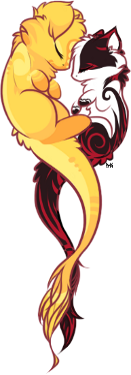
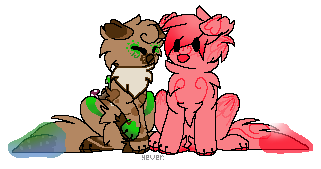
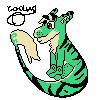
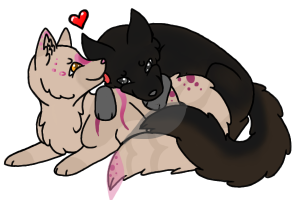

-
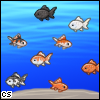
Dissimulodeerling. - Posts: 1918
- Joined: Wed Jun 05, 2013 1:07 pm
- My pets
- My items
- My wishlist
- My gallery
- My scenes
- My dressups
- Trade with me
General rules.
- Rules-
- Follow all of Tess's rules. All violence and gore and language should be kept strictly offsite. If you want to have adult conversations, CS is not the place to have them. There are young people here and we want to keep it decent and professional.

- No posting on the news forum. (that's the one on sketches and experiments.)
For this you will receive a warning and be asked to remove your message from the forum. - Respect other users and staff.
That means you have due regard for the feelings, wishes, rights, or traditions of others.
Do not force your opinion on other people, or keep people from having an opinion.
As from my perspective, this can be seen as a form of bullying and will get you a penalty. - Don't pester someone about not winning and don't try to guilt trip artists or winners.
If you're upset about a loss bring it to a friend. (or me) so we can talk it out without building up any hate or disinterest towards the winner. If there are any concerns I'd like them to be reported to me as for now, there aren't any People helping me watch for any problems. Don't try to answer questions on the species without knowing. If you don't know, ask me and I will answer the question. - Trading- I may set up a system I may not, for now 'trading' isn't allowed. But I may build up a system for trading and gifting as the species developes.(Don't message me about this)
Breaking any of these rules (depending on the severity.) will result in a Warning or a penalty.
Until and after I come up with a system, gifting will be taken with me and the artist who made your .scb - The designs are copyright of the artist who makes them. Do not Try to transfer the designs to other species even if the other species has permission. If you are the artist of the design, or you have the artist's permission it's okay, but you need screenshot proof, or they to send me a message. or I will not allow it.
- Growths should be approved by artists who did the designs, if the person is no longer a part of the species or not responding, pm me. Soon I will have more people to message about these problems, but until then it's only me.
[for these rules you'll receive a penalty or a strike] - For now Trading does not exist. While I have said I may consider making a system, that does not guarantee it. And if I do, do not try to trade them. If anyone tries to trade before I have developed a system, they will receive a strike.
- Do not steal or try to sell the species. Do not try to trade them for other species either.
When you break the rules you will get a warning to three for minor rule breaking. but for a repeated offense, you will get a penalty that will not allow you to adopt for a week. if you repeat again after you're clear from that penalty (or during your penalty ex: trying to adopt while on it) your penalty will be extended to 10 days. if you have a third penalty that will be extended to two weeks and you will receive one strike resetting your penalties to 1 as soon as you return. For more severe rulebreaking, you will get penalties or even strikes without warnings. If you get 3 strikes you will be banned from the species.
Warnings-
None
penalties-
None
Strikes-
None.
Bans-
None.
|
|
|
|
|
|
|
|
|
|
|
|
|
|
|
|
|
|
|
|
|
|
|
|
|
|
|
|
|
|
|
|
|
|
|
|
|
|
|
|
|
|
|
|
|
|
|
|
|
|
|
|
|
|
|
|
|
|
|
|
|
|
|
|
|
|
|
|
|
|
|
|
|
|
|
|
|
|
|
|
Art (C) left- Ruki Ki, .Forever. Right- Lineart by wolphee, colored in by Ravendarus. And Kinke by Cali. (I don't remember your CS Name Sweetie) |
|
|
|
|
|
|
|
|
|
|
|
|
|
|
|
|
|
|
|
|
|
|
|
|
|





-

Dissimulodeerling. - Posts: 1918
- Joined: Wed Jun 05, 2013 1:07 pm
- My pets
- My items
- My wishlist
- My gallery
- My scenes
- My dressups
- Trade with me
News-
Still working on the progress and getting the species going, sorry it's slow going! Soon I will post a form for job applications so hopefully I can get some helpers <3
|
|
|
|
|
|
|
|
|
|
|
|
|
|
|
|
|
|
|
|
|
|
|
|
|
|
|
|
|
|
|
|
|
|
|
|
|
|
|
|
|
|
|
|
|
|
|
|
|
|
|
|
|
|
|
|
|
|
|
|
|
|
|
|
|
|
|
|
|
|
|
|
|
|
|
|
|
|
|
|
Art (C) left- Ruki Ki, .Forever. Right- Lineart by wolphee, colored in by Ravendarus. And Kinke by Cali. (I don't remember your CS Name Sweetie) |
|
|
|
|
|
|
|
|
|
|
|
|
|
|
|
|
|
|
|
|
|
|
|
|
|





-

Dissimulodeerling. - Posts: 1918
- Joined: Wed Jun 05, 2013 1:07 pm
- My pets
- My items
- My wishlist
- My gallery
- My scenes
- My dressups
- Trade with me
3 posts
• Page 1 of 1
Who is online
Users browsing this forum: No registered users and 49 guests


